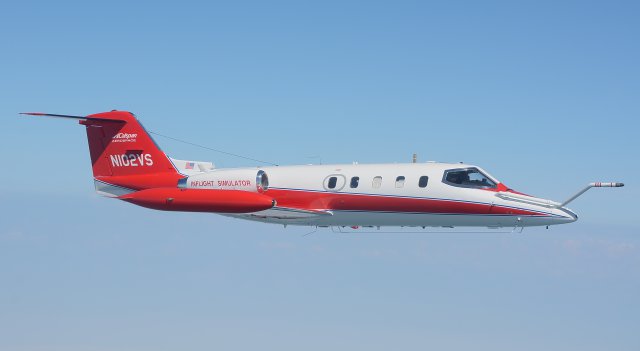Midair Refueling is Drone’s Next Challenge

The refueling probe on this Learjet isn’t the latest option available from the venerable business jet manufacturer. It’s not connected to the airframe’s plumbing, but it is an integral part of a flight test program at Navy Pax River. What you cannot see is that this Lear is also equipped with the navigation, command & control, and vision systems used in the Navy’s X-47B.
As a surrogate for the carrier-based drone, the Lear is assessing the its autonomous refueling capabilities and performance for both Navy and Air Force aerial refueling techniques. There were two pilots aboard the Lear, but they were passengers during the Autonomous Aerial Refueling (AAR) tests. This was just the first step in demonstrating the technology “that will enable unmanned systems to to safely approach and maneuver around tanker aircraft,” said Capt. Jaime Engdahl, manager of the Navy’s unmanned combat air system program.
AAR relies on the same datalink and precision relative GPS algorithms employed in autonomous systems that make it possible for the X-47 to land on a carrier. The next test will happen this fall, when the surrogate Lear, using X-47 software and hardware, will fly a completely autonomous refueling procedure, from rendezvous and plug to safe separation. One wonders what this technology holds for the future of civil aviation.

If this technology can bring two aircraft close enough together to refuel, telling it to do the opposite, stay a certain distance away from other aircraft, would logically not be any more challenging. The real challenge, I feel, was that of the test pilots in the surrogate Lear. Certainly they understood almost every aspect of the technology involved in the test, but I can’t imagine that it made it any easier to sit there and monitor the test’s progress, cocked and ready to take over manually (humanly?) at the first sign of anything going awry. — Scott Spangler, Editor



